How Can You Keep Leopard Gecko Tanks Humid? (9 Easy Ways!)
Sadly, I still come across several keepers that pay no attention to the humidity needs of leopard geckos. I think this mindset can be easily traced to the misconception about their natural homes which are commonly described as “arid.” But the truth is they experience humidity as high as 80% even in the wild!
Leopard gecko keepers can raise and better maintain humidity levels in tanks using: water bowls, moist hides, soil-based substrates, live plants, misters, wet towels, ventilation covers, humidifiers, and bigger tanks. Having an accurate hygrometer to monitor humidity levels in gecko tanks is essential.
Providing leopard geckos with humidity levels that are either too low or too high comes with their own sets of dangers—which can be deadly. So if you want to know how to increase and decrease the humidity in gecko tanks, just scroll on!
1. Water Bowl
Placing a medium or large water bowl in a leopard gecko’s tank can raise the humidity. To effectively increase the humidity levels, the bowl must be placed by the middle of the enclosure, closer to the warm end.
Some people believe that geckos don’t drink directly from their water bowls so they decide on removing such provisions from tanks.
However, they are then faced with the unexpected consequence of having humidity levels as low as 10%—sometimes, even lower!
Now, why does that happen?
Without any source of moisture in the tank (in this case, a water bowl), there is no way for humidity to build up. This is because humidity represents the amount of water vapor in the air.
In other words, when there is no water readily available in the area there will be little to no humidity. This is even more noticeable in relatively small enclosed spaces like leopard gecko tanks.
However, there’s more to it than just that. The placement of the water bowl (the one below is a pretty good one) can also affect the humidity levels in your leo’s tank.
Optimal Water Bowl Placement in Leopard Gecko Tanks (The Science)
At the warm end of a leopard gecko’s tank, the temperature is higher and the air can hold more water vapor [1]. Conversely, the temperature is lower and air can hold less water vapor in the cool end of the tank.
Hence, placing the water bowl near the warm end will help maintain a moderately humid environment for your gecko. This is possible since it ensures that there is always clean water that can evaporate into the air to keep it relatively humid.
On the other hand, having the bowl at the cool end—and away from the heat lamp—will result in the opposite effect, making the tank less humid as a whole.
Remember: Leopard geckos require an overall tank humidity that ranges from a low 35% to a high 65% throughout the day. To closely check and monitor this a good hygrometer is necessary.
Find out what to look for in a good unit in our article on the best hygrometers for geckos.
2. Moist Hide
All leopard geckos should have access to a moist or humid hide in their tanks at all times. This basic tank provision not only raises overall tank humidity but also creates a more humid localized spot which can improve shedding and hydration.
A moist hide is any non-porous container, like plastic and glass, with a single hole for easy access. Then it is filled with moisture-retaining bedding to create a space with moderately high humidity in reptile tanks.
If you’d prefer to buy a ready-to-use moist hide, then I suggest a product like the one below. You can easily open and close it for misting and bedding replacement.
You can easily create your own moist hide with little to no additional costs using materials you can readily find at home.
Most beginner keepers use old—but clean—plastic food containers and line those with layers of moist paper towels.
Others use mason jars filled with moistened sphagnum moss. I have even seen a few gecko pet parents decorate the outside with fake moss and rocks to make it blend in with more naturalistic tank setups.
There are many other options for moist hide bedding including, but not limited to, soil-based mixes and moistened coconut fiber.
The Perfect Humidity Level for Leopard Gecko Moist Hides
Humidity levels inside the moist hide should stay within the 60–80% range. Now, I know this might seem too high for others but wild leopard geckos actually experience this in their natural habitats, especially due to summer monsoon rains [2].

Also, the humidity in your cute little leo’s moist hide will normally be higher than the rest of the tank. You can keep an eye on this by using a probed hygrometer (the Zoo Med are pretty decent). Make sure to place the sensor in the hide for accurate readings.
3. Soil-Based Substrate
Many experienced leopard gecko owners have reported improved humidity levels after switching to soil-based substrates. Solid substrates such as paper towels and tile do not absorb and retain water effectively resulting in low humidity.
Through the years, I have noticed that there’s a common theme to the stories of leo keepers having trouble raising humidity levels. It is that they use a solid substrate.
Now, I’m not saying those are bad or even dangerous. But they definitely aren’t the best choice for long-term leopard gecko setups, simply because they can’t keep much water—which as I have explained before is key for more humidity.
Learn more about the differences between different bedding options in our article on bioactive substrates.
By not providing leopard geckos with loose substrate—at least 4 inches thick—that’s primarily made using soil, it will surely be difficult to boost humidity to the ideal range.
After switching to a soil-based substrate, you can expect your leopard gecko tank’s humidity levels to be around 40–65%.
A good pre-mixed soil-based substrate to start with is this one from The BioDude. Just remember to mix the soil around and moisten it will a small cup of water once the humidity stays within the 30–40% range.
Pro Tip: Replace regular soil-based loose substrate 3–4 times a year to avoid the build-up of potentially harmful bacteria and mold in leopard gecko tanks. Upgrade to bioactive eliminate regular replacement.
If your leo is already on a loose substrate but humidity is still relatively low, add more moisture-retaining substrate materials like soil, coco coir, moss, and dry leaves.
4. Live Plants
Adding appropriate live plants into a leopard gecko tank, like the jade plant or Crassula ovata, can help improve humidity levels. When live plants are sufficiently watered, they can also release water to keep the area more humid.
The scientific term used to refer to this is transpiration or evapotranspiration [3]. In simpler terms, the water that plants absorb through their roots can be released into the air through the microscopic pores in their leaves.
Just keep in mind that the more plants you add to your gecko tank the more humid it can get. Don’t turn your leopard gecko’s tank into an unruly jungle—they aren’t tropical species!
Be careful with your choice of greens as well. Air plants, golden pothos, and jade plants are my top three favorites. I like them because they are beautiful and their growing requirements match the tank requirements for leos—including humidity.
Find out which plants to get for your baby in our article on the best leopard gecko plants.
Depending on what area you live in and how big your gecko tank is, the ideal number of live plants you should put in the enclosure will greatly vary.
So I suggest that you only add one plant at a time. Make sure to monitor and take note of the changes in humidity with each plant you put [4]. In the beginning, humidity levels are likely going to spike.
5. Mister
For leopard geckos, a manual mister or spray bottle can help regular keepers with maintaining optimal humidity levels in the tank. Misting should ideally be done early in the morning or at night about 1–2 times a week.
Oftentimes, misting can be especially helpful with keeping the humidity in leopard gecko tanks at the lower end of the acceptable range. This is especially true for really dry winters.
So if you find that the humidity in your soft-scaled baby drops during the colder months, you can mist their tanks more regularly.
A cheap plastic bottle will do fine. Just fill it with either spring or filtered tap water and then mist away.
I would recommend misting around the enclosure than directly spritzing at your geckos. Although the supposed dangers of doing so aren’t well-established, I would say that our leos—at the very least—would not enjoy being targeted with streams or mists of water.
Having said all of that, misting alone won’t keep your leopard gecko’s tank humid enough. It’s better if you do it in tandem with all the previous solutions I have discussed for optimal humidity control.
6. Wet Towels
Draping wet towels by the cool end of leopard gecko tanks, away from electrics, can safely help increase humidity levels. However, this is only a temporary method of raising tank humidity and it can be troublesome for some keepers.
If you already have all the previous items in your gecko tank but the humidity is still at the lower end of the ideal range, then this trick will help raise it.
Like the previous one, wet towels only offer a short-term solution for humidity problems. Plus, you’ll need to dampen it again and again for it to increase humidity.
You can place the wet towel or sponge directly inside the enclosure. In doing so, the moisture in the towel can readily evaporate into the air and boost humidity.
But it can be troublesome to have to bring it in and out of the tank to keep it damp enough. Plus, you would have to wash it regularly as well to avoid turning it into a breeding ground for bad bacteria and other such microorganisms. You can also just place it near the tank.
Other keepers, however, prefer just draping the towel on top of tanks with steel mesh ceilings. Besides providing moisture, placing it on the tank ceiling also partially covers the screen thereby restricting airflow.
All those factors combined can raise humidity levels by 10-20%—albeit temporarily. This is probably why keepers commonly do this during cooler and drier months.
7. Ventilation Covers
Using acrylic panels as ventilation covers to partially top leopard gecko tanks with steel screen ceilings can increase humidity. Such products can safely raise humidity by restricting airflow.
Compared to using wet towels, this is definitely much safer as the likelihood of electrical issues and accidents is basically eliminated.
You see airflow and humidity have an inverse relationship. In other words, more wind and airflow lowers humidity, whereas less wind and airflow raise humidity.
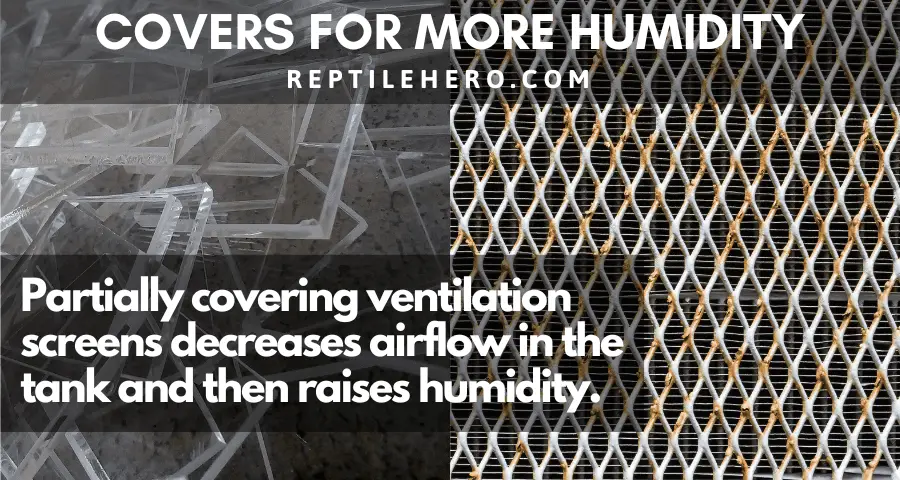
So using sheets of acrylic (here on Amazon) or even just cardboard to cover up to 50% of a mesh-topped enclosure can significantly boost humidity for as long as it stays there.
However, it is important to keep in mind that decreasing ventilation can still cause problems in the long run if done excessively. Such problems include fungal and bacterial issues. In the worst-case scenario, these problems could make your precious leopard gecko sick.
8. Humidifier
Running a humidifier filled with only clean water near a leopard gecko’s tank can effectively help with increasing humidity levels. Additionally, operating this with a hygrostat ensures that humidity neither becomes too low nor too high.
Honestly, using a humidifier is more effective than using a wet towel as a ventilation cover. Because by boosting the humidity within the room the tank is kept in, the in-tank humidity will surely increase more steadily as well.
Using those small desktop humidifiers that hold less than a liter of water, however, won’t give you such a benefit. Ideally, you should use a room humidifier like one below which holds several liters of water at a time.
Just don’t add any essential oils to the water without consulting your lovely leopard gecko’s veterinary doctor about it.
Then to ensure that it doesn’t make raise the overall humidity in your leopard gecko’s enclosure to really high levels, hook it up to a humidity controller (here on Amazon).
A hygrostat or humidity controller can either turn on your humidifier if the level goes below your ideal range, or shut it off when the humidity goes above the ideal range.
For accurate reading and control, place the hygrostat’s sensor probe in your gecko tank.
9. Bigger Tank
Housing leopard geckos in bigger tanks, like a 120-gallon enclosure, improves not only thermal gradients but also humidity gradients.
If you have done all the above but are still struggling to keep your leopard gecko’s tank humid enough, then you should consider buying a bigger tank.
Also, consider the size of your leopard gecko’s enclosure. New gecko owners with little to no knowledge of updated husbandry standards commonly keep their geckos in really small 10 or 20-gallon tanks.
More often than not, they experience problems with both heating and humidity. It could be too much or too little. They can’t maintain a cool and humid enough enclosure or vice versa.
This is because other than the presence of water and airflow, the temperature can greatly affect humidity as well.
The relative humidity is high when the temperature is low. Conversely, relative humidity is low when the temperature is high. This is why it gets more humid at night than at noon.
So to hit two birds with one stone—heat and humidity—you need to get your gecko an enclosure that’s both big and long. This ensures that the cooler end will have a more stable moderately high humidity around the 50–60% range.
Personally, I like front-opening 120-gallon tanks with screen ceilings (here on Zen Habitats) for leopard geckos.
Check out other options in our article on the best leopard gecko tanks.
Why is Humidity Important for Leopard Geckos?
Maintaining an optimal humidity range in the tank is important for leopard geckos as having too little or too much can result in various health issues. For instance, insufficient humidity can cause retained shed while excessive humidity can cause respiratory problems.
Contrary to popular belief, leopard geckos actually seek moist shelters even in the wild.
More importantly, leopard geckos that are housed in enclosures with inappropriate environmental conditions, like humidity, are likely to suffer from various diseases [5, 6]. Though these conditions can be treated, they can be life-threatening if not addressed early.
A leopard gecko that is kept in an enclosure where the overall humidity is constantly low (below 35%) is at risk of developing the following:
- Dry spectacles
- Abnormal shedding
- Skin discoloration
- Dehydration
- Constipation
- Gout
- Renal diseases
- Vent prolapse
- Egg-binding
- Sperm plugs
- Limb constrictions
- Toe loss
- Tail necrosis
- Weight loss
- Hormonal problems
In contrast, a leopard gecko that is kept in an enclosure where the overall humidity is sustained at a high level (above 65%) is also likely to suffer from the following conditions:
- Skin inflammation
- Blister disease
- Bacterial infections
- Fungal infections
- Scale rot
- Pneumonia
- Respiratory infections
Either way, it’s important to immediately consult an experienced exotic veterinarian for proper assessment and treatment of your pet leopard gecko.
So now, let’s move on to how to lower humidity levels to prevent the possible negative consequences of too much humidity!
15 Ways to Decrease Humidity in Leopard Gecko Tanks
Below are effective ways to lower overall humidity in leopard gecko tanks:
- Use overhead heat lamps
- Add ventilation holes in tank walls
- Get a shallower water bowl
- Move the water bowl away from the warm side
- Replace full-paneled ceiling with steel mesh
- Decrease misting frequency
- Scatter flat stones on top of a soil-based substrate
- Amend the substrate recipe being used
- Lessen the number of live plants
- Place a rice-filled sock inside the tank
- Lay down some silica sachets to absorb moisture (the basic ones shown below are just fine) next to the tank
- Run a dehumidifier near the tank
- Air out the room the gecko tank is kept in
- Keep a fan in the gecko or reptile room
- Turn the air-conditioning unit on
If none of the above helps you decrease the humidity levels in the tank, then double-check your hygrometer!
Defective units will give out highly inaccurate readings which may lead inexperienced gecko keepers to believe that their leopard gecko is having humidity problems. Make sure that your readings are correct before messing with an already good tank setup.
Further Questions
Why is the gecko always in the humid part of the tank?
A gecko may stay in the humid part of its tank, such as the moist hide, due to various reasons. They may stay there in preparation for shedding or to cool off from the heat. Other possibilities also include wanting to feel more secure or seeking hydration.
Is it normal for humidity to fluctuate in reptile tanks?
It is perfectly normal for humidity to fluctuate throughout the day in reptile tanks. Mostly, this fluctuation is caused by the changing temperatures in the environment. Even wild reptiles are likely to experience temporary humidity spikes and drops in their native homes.
Summary of How to Keep Leopard Gecko Tanks Humid
The overall humidity range in leopard gecko tanks should be maintained between 35% and 65%. Additionally, they must be provided a space where a higher humidity range of 65–80% can be localized.
It is important to maintain the ideal humidity levels for leopard geckos in their enclosures to prevent the development of various diseases. Such diseases vary in terms of severity. Humidity-related conditions include abnormal shedding, scale rot, and pneumonia.
Leopard gecko owners can use a variety of items like water bowls, moist hides, soil substrates, live plants, and humidifiers to raise humidity. On the other hand, using heat lamps, dehumidifiers, and fans among other things can help lower humidity.
Sources
[1] https://sciencing.com/relationship-between-moisture-temperature-4007.html
[3] https://www.healthline.com/health/humidifying-plants
[4] https://stanhope-vet.co.uk/wp-content/uploads/2015/02/Leopard-Gecko-Care-Sheet-STANHOPE.pdf
[5] https://www.merckvetmanual.com/exotic-and-laboratory-animals/reptiles/overview-of-reptiles

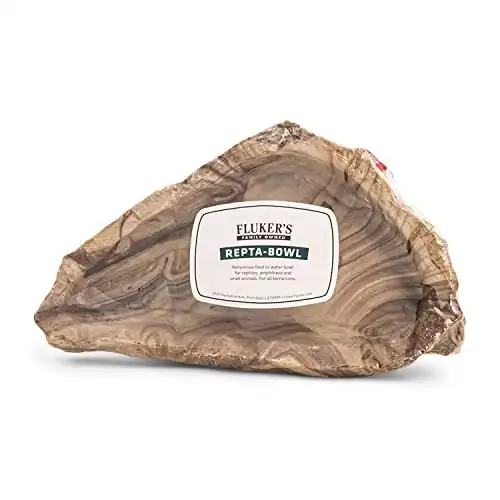
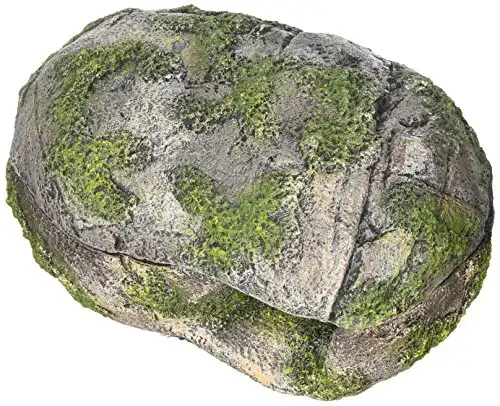
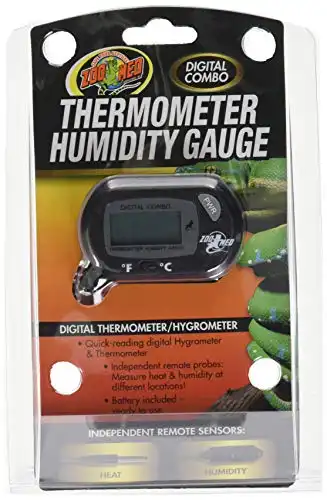

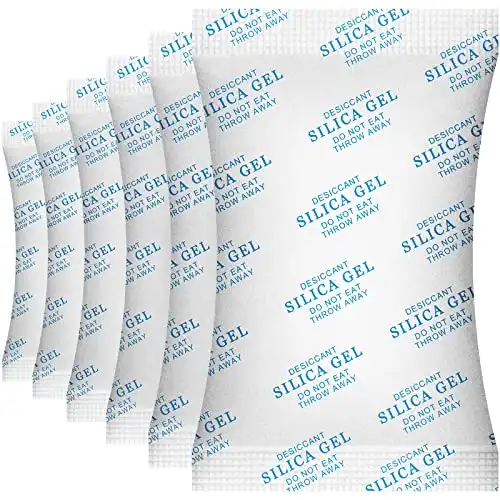
![Can Leopard Geckos Survive Falls? [2 Real Stories]](https://www.reptilehero.com/wp-content/uploads/2021/07/Gecko-Fall-Infographics-768x614.jpg)
![Human Foods Geckos Can And Can’t Eat [Massive List Ahead]](https://www.reptilehero.com/wp-content/uploads/2022/06/food-geckos-can-and-cant-eat-cc-768x614.jpg)

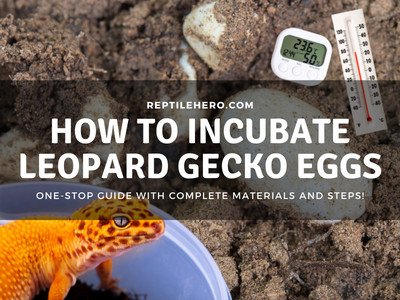
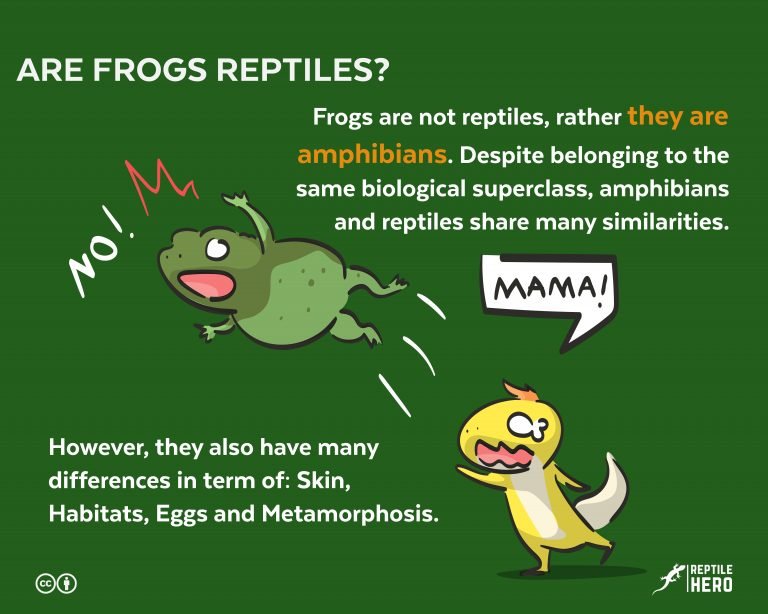
![8 Reasons Why You Should Not Keep A Wild Gecko as a Pet [1 Exception]](https://www.reptilehero.com/wp-content/uploads/2021/03/word-image-9-768x576.png)